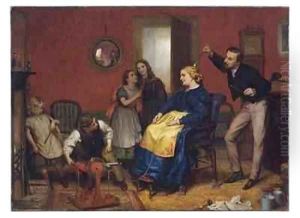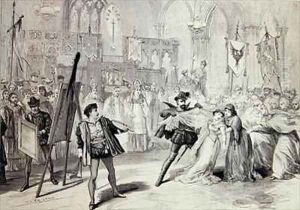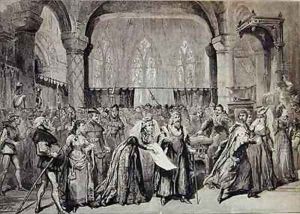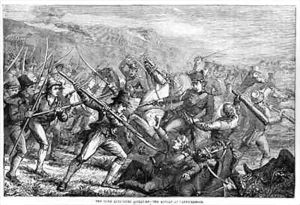David Henry Friston Paintings
David Henry Friston was a British illustrator and figure artist, known for his work in periodicals, books, and theatrical productions in the Victorian era. Born in London in 1820, Friston's career spanned much of the 19th century, a time characterized by significant social, technological, and artistic changes. Although not as widely recognized today as some of his contemporaries, he played a notable role in the development of graphic illustration.
Friston's early life is not well-documented, and little is known about his artistic training. However, he emerged as a skilled illustrator and began contributing to various London publications in the 1850s. His illustrations appeared in popular periodicals of the time, such as The Illustrated London News, The Graphic, and Punch. He also worked for the Illustrated Times, which provided him with steady commissions.
Throughout his career, Friston illustrated a wide range of subjects, including contemporary events, historical scenes, and literary works. He was quite versatile, adapting his style to suit different narrative contexts and audiences. One of his most famous works is the first known illustration of Sir Arthur Conan Doyle's detective Sherlock Holmes, which appeared in the 1887 Beeton's Christmas Annual alongside the first Holmes story, 'A Study in Scarlet'. This illustration is significant as it predates the more famous images by Sidney Paget, who later defined the iconic look of Holmes.
Friston was also active in the world of theater, creating set designs and costumes for various London productions. His work in this field reflected the elaborate and often flamboyant styles of Victorian stage design. Despite the ephemeral nature of theatrical art, his contributions to stagecraft added to the richness of London's vibrant theater scene.
David Henry Friston's career reflects the expanding opportunities for Victorian artists in the commercial and entertainment spheres. As an illustrator, he contributed to the popular visual culture of his time, reaching a broad audience through widely circulated publications. However, details of his personal life, including his artistic education and influences, remain obscure, and his death in 1906 marked the end of a long and productive career. While he may not have achieved the lasting fame of some of his peers, Friston's work remains a valuable part of the visual legacy of the Victorian era.



